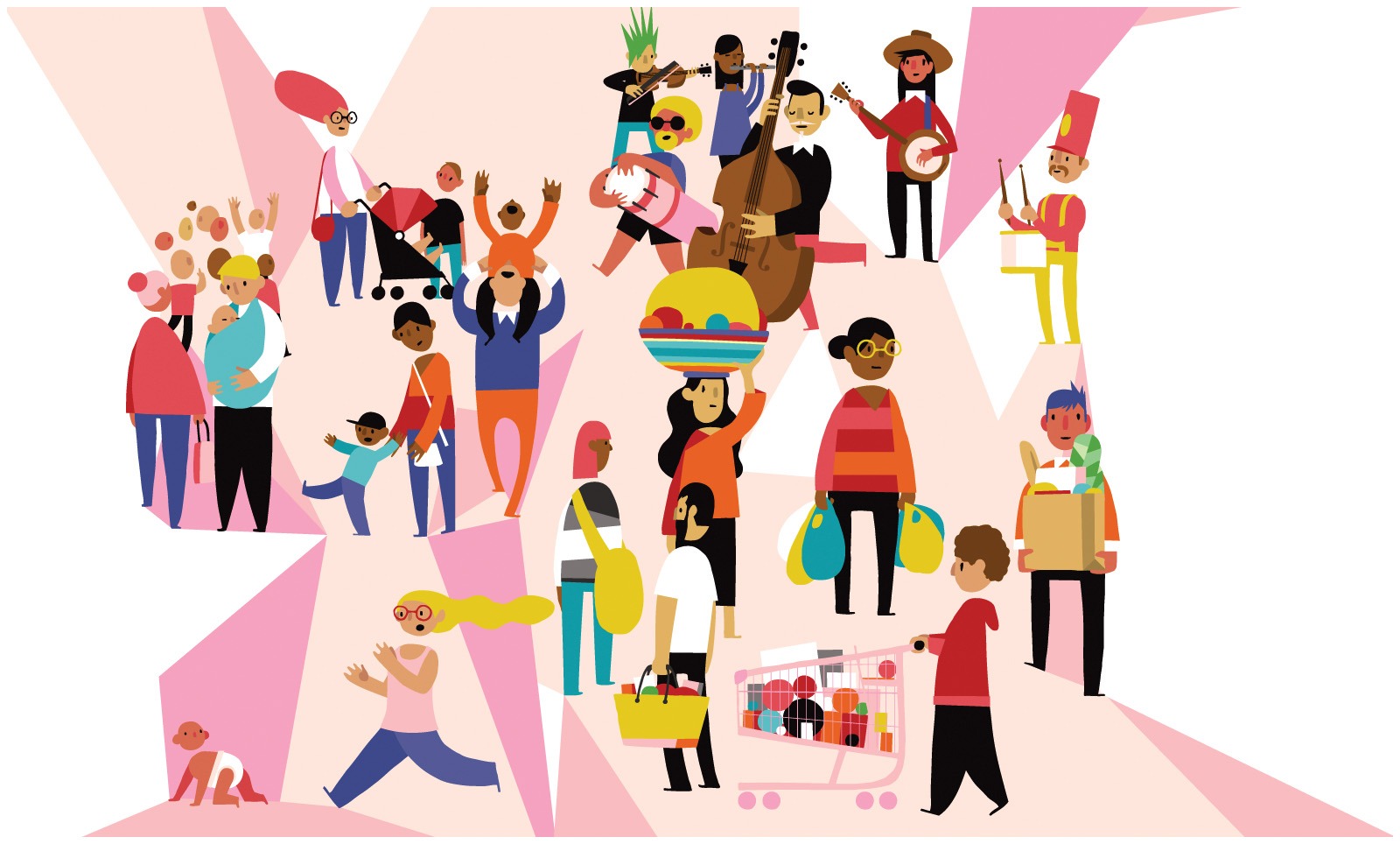Assimilasjon: Process of Cultural Absorption and Identity Transformation
The term assimilasjon—derived from the Norwegian word for “assimilation”—describes the process through which individuals or groups, often from minority backgrounds, gradually adopt the cultural traits, language, behaviors, and social norms of a dominant society. This transformation may occur voluntarily or under social, political, or economic pressure.
In an age defined by globalization and migration, assimilasjon is no longer just a sociological concept—it has become a focal point in debates over national identity, integration policy, multiculturalism, and indigenous rights. The central question remains: Does assimilation foster social unity, or does it erode cultural diversity? To understand this complex phenomenon, we must examine its dimensions, historical roots, psychological impact, and modern implications.
The Multifaceted Nature of Assimilasjon
Assimilasjon is not a uniform or linear process. It occurs across several interrelated domains that influence how individuals and communities adapt within a dominant society. These domains reveal both the opportunities and tensions that arise during cultural absorption.
Cultural Assimilasjon
Cultural assimilasjon refers to the adoption of the customs, values, traditions, and lifestyles of the dominant culture. Over time, individuals begin to align their behavior, food preferences, clothing styles, and even religious observances with those of the mainstream community. This shift often enhances social acceptance but may diminish ancestral traditions.
Linguistic Assimilasjon
Language lies at the heart of assimilation. Learning the dominant language allows immigrants to access education, employment, and social participation. However, as generations pass, heritage languages often fade, leading to a gradual erosion of cultural identity and oral history.
Social and Structural Assimilasjon
Social assimilasjon occurs when individuals form friendships, marriages, or community ties within the majority group. Structural assimilasjon extends deeper—it involves equal representation and participation in institutions such as schools, the workforce, governance, and media.
Table 1: Four Main Forms of Assimilasjon
| Type | Description | Example |
|---|---|---|
| Cultural | Adoption of dominant norms, religion, and customs | Celebrating national holidays instead of traditional ones |
| Linguistic | Prioritizing the majority language | A Sámi child learning only Norwegian in school |
| Social | Building relationships within the dominant group | Intermarriage, workplace connections |
| Structural | Equal participation in national institutions | Representation in politics, education, and healthcare |
Historical Overview: Assimilasjon in Norway
The history of assimilasjon in Norway is deeply intertwined with the experiences of indigenous and minority communities such as the Sámi, Kven, Forest Finns, and Romani peoples.
From the mid-19th century through the late 20th century, Norwegian authorities implemented a strict policy known as fornorsking (Norwegianization)—a deliberate effort to suppress minority identities and promote linguistic and cultural uniformity.
Children were often removed from their families and placed in boarding schools where speaking their native language was forbidden. Traditional clothing, spiritual practices, and community rituals were discouraged or punished.
The consequences were devastating: loss of language fluency, cultural knowledge, and ancestral pride. Today, many Sámi individuals trace their heritage through generations that were pressured to abandon their roots to “become Norwegian.” This history underscores why modern Norway places great emphasis on reconciliation, cultural revival, and linguistic preservation.
Assimilasjon vs. Integrasjon: Key Differences
It is important to distinguish between assimilasjon and integrasjon (integration)—two concepts often mistaken for one another but representing contrasting approaches to cultural inclusion.
| Feature | Assimilasjon | Integrasjon |
|---|---|---|
| Cultural Identity | Often diminished or erased | Preserved and respected |
| Language Policy | One dominant language prioritized | Multilingualism supported |
| Governmental Approach | Monocultural framework | Multicultural framework |
| Outcome | Cultural uniformity | Diversity within unity |
| Example | France’s secular education policy | Canada’s multiculturalism program |
In essence, assimilation expects minorities to become like the majority, while integration allows them to belong without losing who they are.
Modern Assimilasjon: The Immigrant Experience
Norway’s recent immigration waves—from Somalia, Pakistan, Syria, Poland, and Afghanistan—highlight how assimilasjon continues to shape identity today.
A Somali family in Oslo may begin speaking Norwegian at home to help their children succeed academically. The children, in turn, adopt Norwegian slang, fashion, and humor, integrating seamlessly into society. Yet, as the family gradually stops celebrating Somali festivals or speaking their native tongue, deeper assimilation takes root.
For second-generation immigrants, the emotional burden can be significant. They may struggle with dual identity conflicts, feeling “too foreign” in Norway but “too Norwegian” in their parents’ eyes. This cultural in-betweenness often leads to internalized guilt, identity confusion, or social isolation.
Psychological and Social Impacts of Assimilasjon
While assimilation can lead to economic mobility and social acceptance, it can also create emotional dissonance. When assimilation feels forced, individuals often experience profound psychological strain.
Common Emotional Outcomes
- Loss of Identity: Disconnection from ancestral customs and languages.
- Generational Conflict: Tension between younger and older family members over values and traditions.
- Cultural Disorientation: Difficulty reconciling multiple cultural identities.
- Social Isolation: Feeling excluded from both the host and heritage communities.
Table 3: Advantages and Disadvantages of Assimilasjon
| Advantages | Disadvantages |
|---|---|
| Greater access to education and jobs | Erosion of cultural identity |
| Social acceptance and reduced conflict | Extinction of minority languages |
| Strengthened national unity | Intergenerational trauma |
| Civic and political participation | Marginalization when assimilation is incomplete |
Global Perspectives on Assimilasjon
France
France exemplifies a strong assimilation model under the principle of laïcité (secularism). Immigrants are encouraged to embrace a “universal French identity,” often discouraging public expressions of cultural or religious difference.
Canada
Canada’s official policy of multiculturalism offers a sharp contrast. Instead of demanding assimilation, it celebrates diversity by funding cultural programs, heritage schools, and community festivals.
United States
Historically known as a “melting pot,” the U.S. once promoted rapid assimilation as a mark of patriotism. Over time, however, the country has evolved toward a “cultural mosaic,” acknowledging multiple coexisting identities.
The Role of Education and Media
Education and media are powerful forces in shaping or resisting assimilation.
In Norway, schools promote equality, inclusion, and respect for diversity, yet the dominance of the Norwegian language subtly reinforces assimilation.
Similarly, mainstream media amplifies majority narratives, making it harder for minority voices to find representation. However, digital platforms have created new spaces for cultural preservation—immigrant youth can now express dual identities through YouTube channels, podcasts, TikTok content, or diaspora forums.
This digital empowerment allows individuals to participate in Norwegian society without entirely abandoning their heritage.
Political and Legal Responses to Past Assimilation Policies
Acknowledging the harm caused by historical assimilasjon, the Norwegian government has implemented several reforms:
- The Sámi Parliament (Sametinget): Grants indigenous communities authority over language, education, and cultural matters.
- The Truth and Reconciliation Commission: Documents and addresses the long-term effects of the Norwegianization policy.
- Cultural Preservation Programs: State funding now supports Sámi, Kven, and Romani language revitalization and community centers.
These initiatives represent a moral shift—from enforced conformity to restorative justice and cultural protection.
Challenges and Future Directions
Despite progress, subtle forms of assimilation persist. Immigrants may still feel pressure to “fit in” to avoid discrimination, and employers or institutions may unconsciously favor dominant cultural norms.
Key Priorities for the Future
- Implement cultural competence training in schools, workplaces, and public services.
- Encourage integration-focused policy frameworks rather than assimilationist ones.
- Expand mental health and language support for immigrant families.
- Promote diversity as a national strength through media and education.
Conclusion
In its ideal form, assimilasjon can enhance opportunity, stability, and shared understanding. Yet, when imposed or expected at the expense of identity, it becomes a tool of erasure.
Modern societies like Norway are learning that true unity does not require uniformity. The future lies in fostering communities where individuals can thrive both as contributors to national life and as bearers of their ancestral heritage.
Assimilasjon, therefore, is not merely a question of adaptation—it is a test of how far societies are willing to go to ensure inclusion without erasure, and diversity without division.






